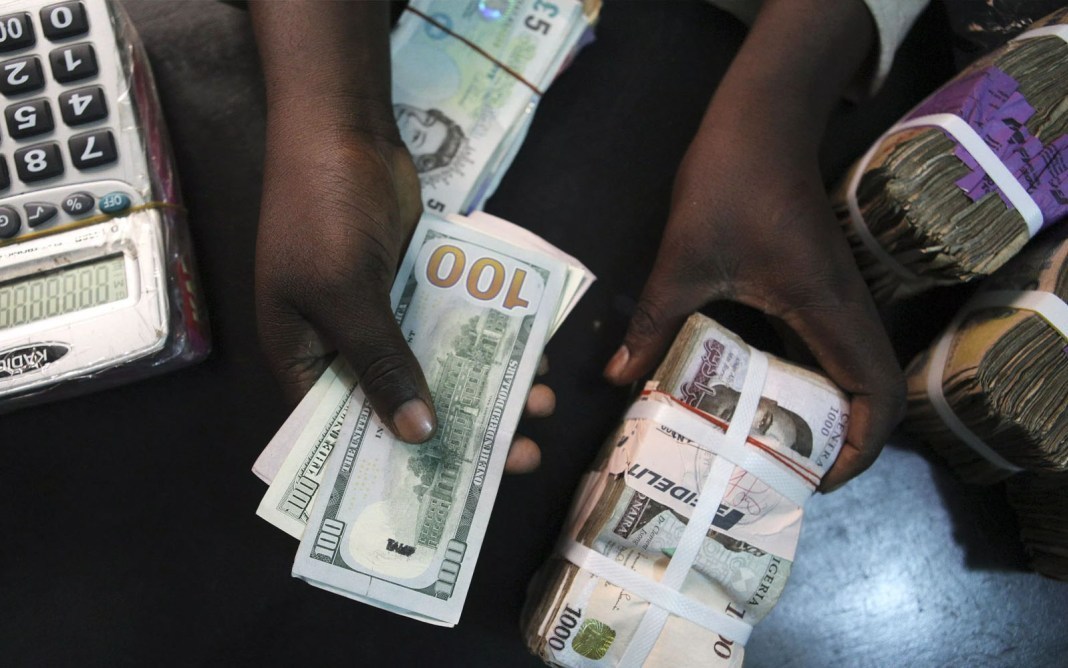Importers scramble for dollar weakens naira
This is as a result of importers scramble for scarce dollar to meet business demand.
The rising dollar demand and a shortfall in forex supply have been putting pressure on naira.
At the weekend, the naira dipped against the dollar to N475, the second slide since the start of the year in the unofficial market.
A Trading Desk Manager at AZA, a global forex trading firm, Murega Mungai, said the return to nomalcy of commercial activities after the end of year holidays would require Nigerian businesses sourcing for more dollars to replenish their stock.
In a report sent to investors titled: Business as usual means weaker naira”, Mungai explained that after the recent official rate adjustment, market players await communication from the Central Bank of Nigeria (CBN) that might provide forward guidance for the naira.
“We expect the currency to remain around N470 to N480 levels in the parallel market in the near term.”
However, the gaps between official and parallel market rates have been narrowing in recent weeks as the CBN sustains its weekly dollar interventions across market segments.
The exchange rate at the investors’ and exporters’ (I&E, or NAFEX) window was recently adjusted from N394 to N410/$. This has narrowed the gap between the official and the parallel market to less than 15 per cent from around 30 per cent.
The CBN has also resumed forex cash sales to Bureaux de Change (BDC) operators to boost liquidity and ease demand pressure over the holidays.
The current naira exchange rates showed the rates are converging in line with the World Bank/ International Monetary Fund (IMF) recommendations to Nigeria.
Head Research, Coronation Asset Management, Guy Czartoryski, said the CBN follows a managed exchange rate policy regime.
In an emailed note to investors said: “Last year saw several changes in the CBN’s official rate, and smaller (though significant) changes in naira exchange rates quoted by FMDQ, Nigeria’s over-the- counter (OTC) exchange. Moves recorded in the last trading sessions of 2020 brought the Importers & Exporters Window (I&E Window) to N410.25/US$1.”
For Czartoryski, this goes some way to narrowing the gap – now less than 15 per cent – between the OTC currency market and the cash parallel exchange rate, and goes some way to addressing the World Bank’s criticisms of multiple exchange rates. This suggests that there may be more step-changes in Naira/US dollar in 2021″.
Other analysts said demand for forex remains high and the supply is inadequate for regular uses, let alone the delayed external payments.
According to FMDQ, local sources (principally the CBN and non-bank corporates) are providing more than 90 per cent of forex inflows at the I&E window.
“We expect a modest pick-up in inflows as a result of the adjustment, predominantly from local sources. We do not expect much of a response from foreign portfolio investors (FPIs): the local equities market gained 50 per cent last year with negligible foreign participation and returns on FGN debt instruments compare poorly with many Emerging Market peers,” Czartoryski, said in his note to investors.
He predicted that the rate convergence may unlock some multilateral budget support from the World Bank and others that was said to be conditional upon unspecified movement on exchange-rate policy.
On the macro side, the adjustment gives a boost to non-oil exports and to all inflows converted into naira at the I&E window (or Bureaux de Change).
“We do not expect to see a crawling peg regime announced, but we do expect the CBN to continue with such step-changes in Naira/US$ exchange rates during 2021. This way the CBN would be able to gradually narrow the gap between, say, the FMDQ OTC I&E Window at N410.25/US$1 and the cash parallel exchange rate, reported at N470.00/US$).
“Doing this might go some way to addressing the World Bank’s stance that Nigeria needs to merge its currency rates. And it might improve liquidity in the NAFEX and I&E Windows, with time.”
International Monetary Fund (IMF) and World Bank have asked Nigeria to reform the naira, which according to the multilateral institutions ‘is too expensive’.
The global lenders have intensified calls on Nigeria to speed up currency reforms without which Nigeria may fail to achieve the growth it needs to prevent millions more from falling into penury.
The IMF said unified and flexible exchange rate will ease external imbalances and bolster activity in the economy.
CBN Governor Godwin Emefiele and Finance Minister Zainab Ahmed promised to seek a more flexible and unified naira as part of a pledge made to the IMF for the release of $3.4 billion in emergency financing in May.
A sharp drop in dollar revenues has forced the CBN to devalue the currency by more than 20 per cent last year. Still, the naira remains too expensive and a dollar shortage is starting to hurt local businesses, economists say.
Incomes in Nigeria have fallen back to 1980 levels as population growth outpaced economic expansion. The situation is unlikely to improve without policy changes.
“Under current policies, the outlook is challenging. Real GDP is projected to contract by 3.25 per cent in 2020. The recovery is projected to start in 2021, with subdued growth of 1.5 per cent and output recovering to its pre-pandemic level only in 2022,” the IMF said.


